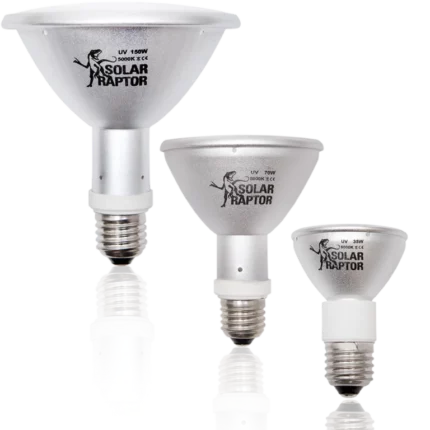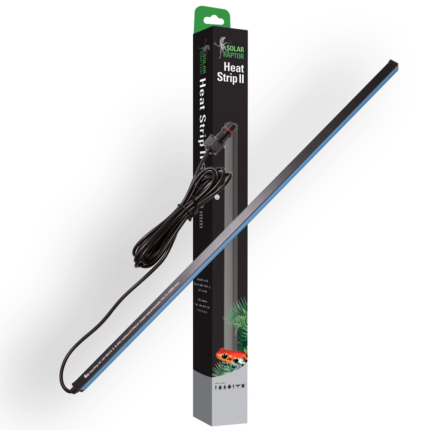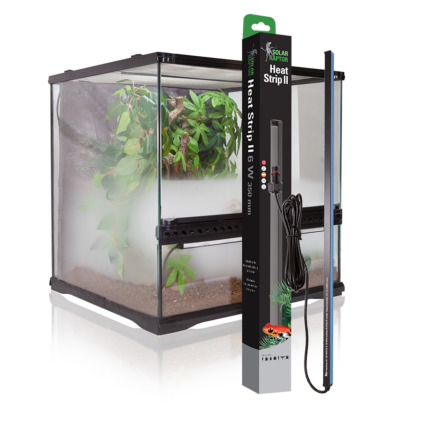In this article we look at the terrarium accessories that you are likely to need as a new reptile keeper. Although we cover the necessary terrarium equipment in general, the article also includes basic information on caring for a variety of reptiles. By talking about some of the key accessories needed for snakes, lizards and turtles, you’ll gain a good understanding of how to create a suitable habitat for your new pet.
If you are buying a terrarium and its inhabitants, first read this article here. Then you should get species-specific information — about the exact reptile species you want to keep. This is because every reptile species has very individual care requirements. You should therefore supplement the knowledge you have acquired in this article by reading care instructions that relate specifically to your animal.
Now that this disclaimer has been clarified, let’s take a look at the terrarium accessories you will need for your pet.
The terrarium is the foundation
If you have not yet bought the terrarium for your animal, you are in a good position! Because then you can spend some time researching the exact care requirements of the species you want to keep. Based on this research, you can then choose the right type of accommodation for your reptile.

Hint
Follow this order – first inform yourself – then buy the right terrarium – is extremely important: everything that follows is based on the terrarium itself. That’s why the set-up and everything else will be easier if you choose a really suitable type of terrarium for the reptile species you keep in the first step thanks to sufficient basic information.
The first thing you need to think about is the material of the new home: will your reptile be more comfortable in a wire mesh terrarium, a glass terrarium or a paludarium? As always, this depends on the species you want to keep.
If you want to keep a chameleon, for example, you should probably get a gauze or mesh terrarium. A gauze terrarium prevents the build-up of heat or humidity. This ensures an optimum supply of fresh air for the animal. This is a basic requirement when keeping a chameleon.
On the other hand, if your heart beats for a snake species that requires high humidity, a mesh enclosure is the last thing you want. A green tree python, for example, is best kept in a glass or plastic cage where you can control the humidity. Here too, you need to find out about the needs of the reptile species you want to keep and then match the appropriate accessories to this species.
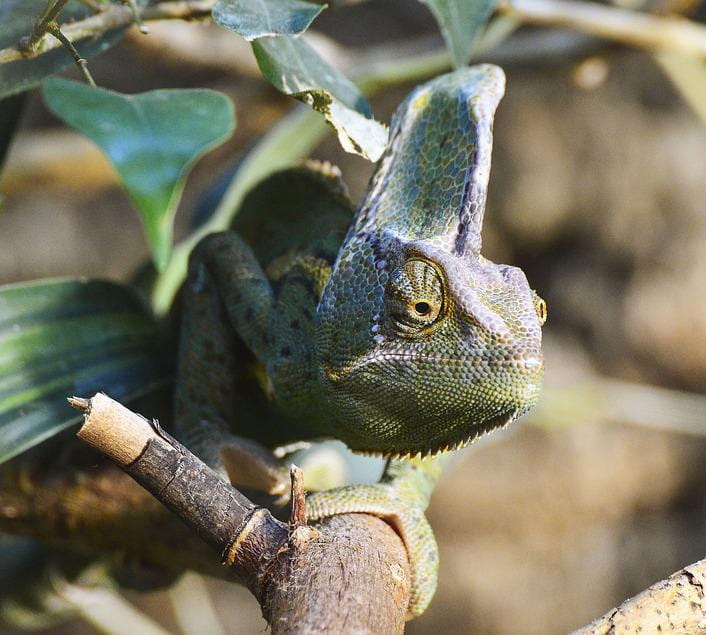
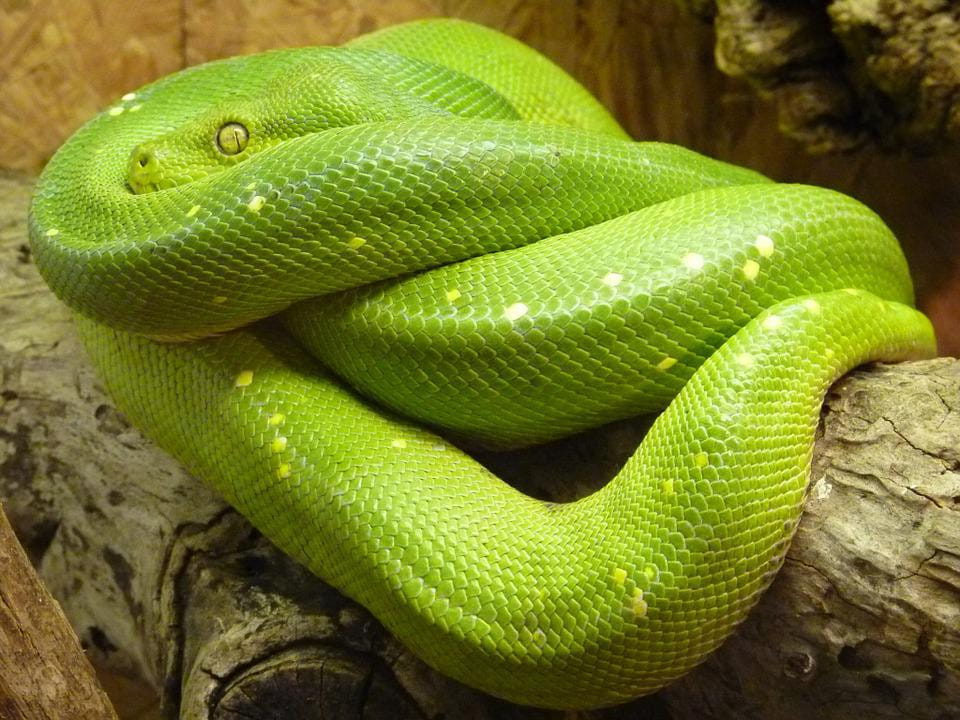
The size of the terrarium is also very important: sure, you may be buying a baby reptile. But how big will it get when it reaches adult size? Just think of the huge difference between a Burmese baby python and an adult or a baby green iguana and a fully developed one.
The difference between the baby and adult size of these and other reptiles is huge. So you need to find out how big your pet will be when it is fully grown. You may well need to buy two cages during the course of your reptile’s life — one for the baby and a larger cage for the adult reptile. But as always, start by doing thorough research on the species you want to keep!
Basic accessories for your terrarium
In general, all reptiles require the same type of accessories in their habitat. While the basic requirements are the same, there are, however, different special features or different designs from species to species.
Here are some of the accessories or equipment for a terrarium that you will most likely need:
- A type of lighting
- A type of heating
- Hiding places for your reptile
- Water tray or drip system
- Spray bottle or sprinkler system (for moisture-loving species)
- A substrate or ground
This is the basic equipment for your terrarium – these accessories are required for almost all reptile species.
If you now go into the individual species you want to keep, things get more detailed: for example, most lizard species require UVB lighting for their general health and well-being.
Most snakes, on the other hand, only need a basic light cycle of day and night. This is a fundamental difference between snakes and lizards, and therefore the type of reptile cage accessories you need to buy will differ.
So the same applies here: Before you buy the equipment for your terrarium, you should — preferably several! — read care information. And for the exact reptile you want to keep.
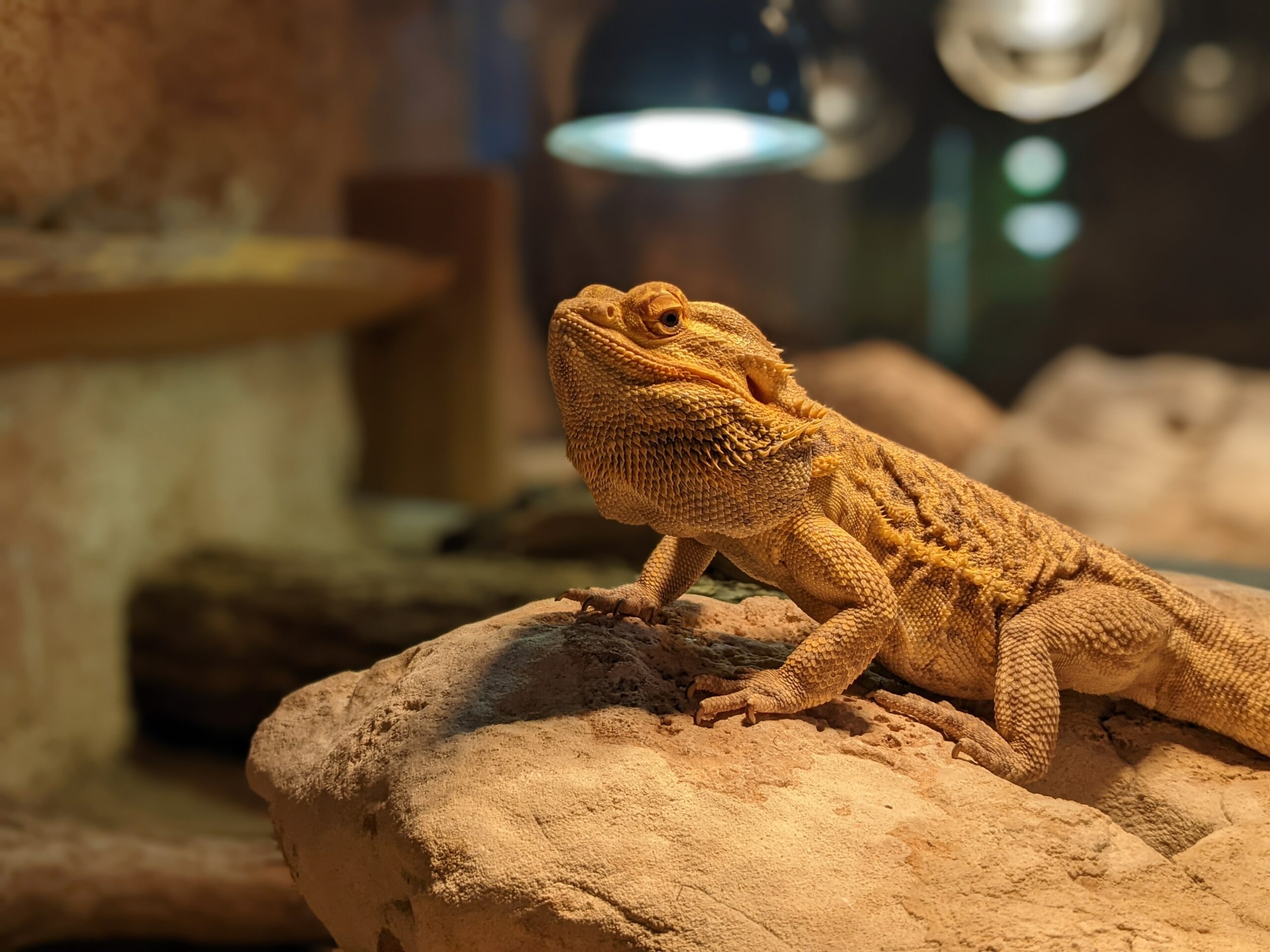
The lighting
Let’s go into a little more detail about terrarium lighting, because lighting is crucial for the health of reptiles!
While some reptile species only require a general light cycle of day and night, but have no specific requirements regarding the quality of the light, other species are also dependent on a specific type of lighting. Snakes, for example, can manage without special UV lighting. They can lead a long and healthy life with a simple fluorescent tube that runs for 10 hours a day.
Most turtle and lizard species, on the other hand, absolutely need UVB lighting. This is because they need UVB light in order to properly absorb the nutrients from their food.
Chameleons need UVB light
SOLAR RAPTOR® UV HID-Lamp
- UV lamps for desert and rainforest terrariums
- Wide UVA- and UVB-spectrum
- All-in-one solution: light, UV and heat
- Full-day lighting
- Electronic ballast (ECG) required for the respective wattage
- Perfect operation with SOLAR RAPTOR® ECGs and ClampLamps
incl. VAT
plus shipping
One example of a reptile with a mandatory UVB requirement is the chameleon. If chameleon keepers who are still new to this field purchase the wrong lighting accessories for their terrarium out of inexperience, this can have serious consequences for their animals. This is because without adequate UV radiation, the vitamins and nutrients from the food cannot be properly absorbed. A variety of health problems can result, including metabolic bone disorders.
Believe us, you don’t want your pet to suffer from bone disease. It’s not a pretty sight and, if left untreated, will lead to the premature death of your beloved pet.
Of all the accessories presented in this article, lighting is therefore one of the most important! It is less vital for snakes than for lizards and tortoises. But it is still something that you should inform yourself about thoroughly before making a purchase.
By the way: because lighting is such an essential but also complex topic, we have dedicated an entire article to it here.
Heating your terrarium
This chapter can be started with a simple principle: Every reptile needs some kind of heat! Although the amount of heat varies from species to species, all reptiles need heat to survive.
This is because reptiles are ectothermic, i.e. they are dependent on their environment to regulate their body temperature. They cannot heat their bodies from the inside out like we humans can. So if you do not heat your reptile cage sufficiently, your reptile will not survive.
SOLAR RAPTOR® HeatStrip II
- Easy installation with adhesive backing
- Air heater/front glass heater
- No more fogged-up windows
- Prevents cold drafts
- A DRV power supply unit is required – please order separately.
incl. VAT
plus shipping
Heat is important for a number of biological functions, but it is most important for digestion. Providing the right amount of warmth in your terrarium will aid the animal’s appetite and digestion. Conversely, insufficient warmth affects digestion and if the cage is not warm enough, your reptile will probably not eat or not eat enough. And if it does eat, it will not be able to digest its food properly. Needless to say, this can lead to a whole host of health problems — including death.
There are many different types of products available as heat sources for terrariums — from heaters, mats or cables to heating stones. As with the choice of light, you should also find out about the specific care requirements of the species you keep before buying heat sources.
Most lizard and tortoise species do well with a ceiling heater. This can be an infrared lamp, a light bulb or a ceramic radiant heater. The aim of all these heat sources from above is to imitate the warming effect of the sun.
If you keep snakes as pets, on the other hand, you have even more heating options to choose from. This is because you can heat a snake in the terrarium not only from above, but also from below. Heating mats or heating cables that are mounted under the tank are available for this purpose.
Monitoring is important
According to the motto, ‘Trust is good, control is irreplaceable’, it is important to measure the temperatures in the cage with a thermometer or a temperature gun. Don’t just estimate how high the temperatures are, find out exactly! Ideally, there should be several thermometers on both sides of the terrarium or at the top and bottom (depending on whether you have a horizontal or vertical habitat).
The best way to measure the temperature at various points in the cage is to use a temperature gun. There are also other accessories that will help you to control the climate in the terrarium. Depending on the products you use, you may also need to buy a hygrometer to check the humidity in the terrarium.
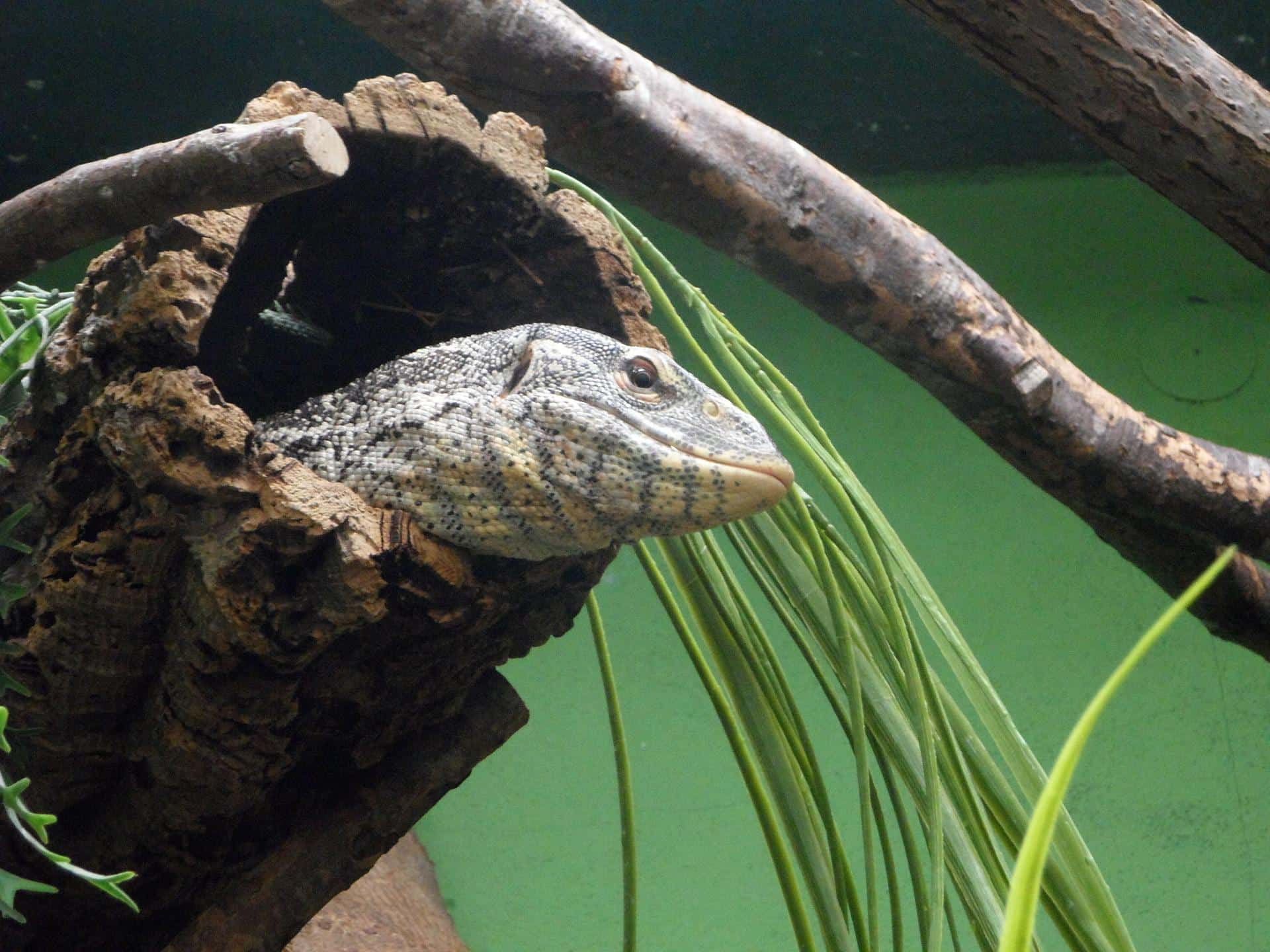
Create hiding places
After the terrarium itself and the accessory topics of lighting and heat sources, now comes the topic of ‘interior design’. Because it is also important to create one or more hiding places for your reptile.
In the wild, lizards, snakes and tortoises spend a considerable amount of time hiding from predators. This behaviour is instinct-driven and accordingly it means considerable stress for the animals if they cannot follow this instinctive behaviour. If you want your animal to stay healthy, you must therefore make it possible for it to hide in its artificial habitat.
If you are housing an arboreal lizard such as a chameleon, you can use real or artificial foliage for it to hide in. A rock or tree trunk is suitable for tortoises. A snake also needs places to hide in order to be able to pursue its natural behaviour as much as possible.
Some terrarium owners use cardboard hiding places (e.g. made from paper towel rolls, shoe boxes, etc.). However, this is not recommended. This is because cardboard soaks up water, urine and faeces and is therefore a perfect breeding ground for pathogenic bacteria. In addition, cardboard cannot be washed, so you have to constantly replace the hiding places. This also means stress for your pet (and is also annoying for you)!
A hiding place made of plastic, ceramic or stone, on the other hand, can be washed and disinfected if necessary. These hiding places therefore last a long time, probably a snake’s entire life.
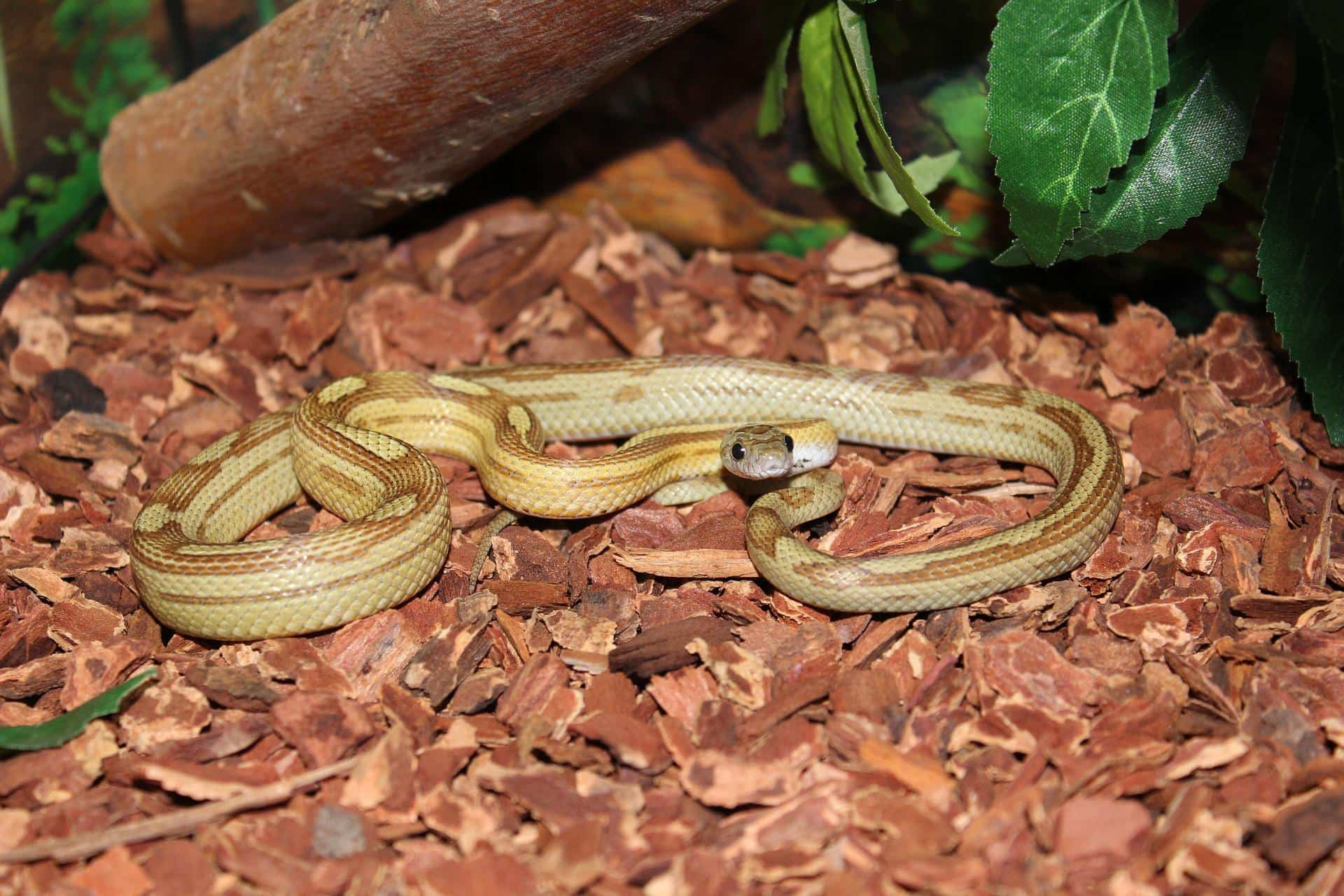
The substrate
The last point we will look at in this article is the substrate for the cage. This is the material with which the bottom of the cage is lined. There is a wide range of substrates available, which vary from reptile species to reptile species. Depending on the species you want to keep, you can choose from a wide range of substrate types – from sand to beech wood shavings to pine bark. Of course, you can also use normal soil. The main thing is to follow the special care instructions for your reptile species. If you want to use substrate or other furnishings from the wild, please bear in mind that you can also introduce diseases. And please also be sure to observe the legal rules on nature conservation: not everything can (and should) simply be taken from the wild!
Some species of arboreal reptiles do not need much substrate at all. This is because they spend most of their time climbing on vines and branches. Most chameleons, for example, rarely come down from their elevated perches. The choice of substrate is therefore more a question of appearance and terrarium care than the health of the reptile.
Conclusion
Take the information we’ve given you in this article and build on it by reading detailed care instructions for the reptile species you want to keep. The more information you gather, the easier it will be for you to choose the right terrarium accessories for the reptile you want to keep. We hope our guide will help you take the first steps towards becoming a reptile keeper. Remember, this article is only intended to give you a general overview of the types of accessories you may need. Have fun setting up your new terrarium!


